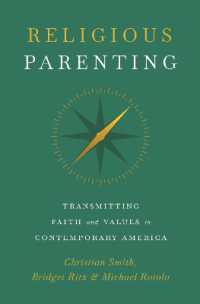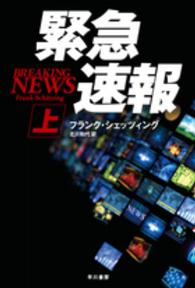Full Description
How do scholars transform qualitative data into analysis? What does making analysis imply? What happens in the space in-between data and finalized analysis is notoriously difficult to talk about. In other parts of the research process, scholars and students are aided by method books that describe the technicalities of generating, processing and sorting through data, handbooks that teach academic writing, and scholarly works that offer meta-level, theoretical perspectives. Yet the path from qualitative data to analysis remains 'a black box.' Qualitative Analysis in the Making ventures into this black box. The volume provides a means of speaking about how analyses emerge in the Humanities. Contributors from disciplines such as anthropology, history, and sociology of religion all employ an analytical double take. They revisit one of their analyses, analyzing how this particular analysis came into being. Such analyses of an analysis are neither confessions nor step-by-step recounts of what happened. Rather, the volume argues that speaking of the space in-between requires analytical displacement, and the employment of fresh analytical takes. This approach contributes to demystifying the path from qualitative data to finalized analysis. It invites novel epistemological reflections among scholars, and assists students in improving their analytical skills.
Contents
Introduction: Analytical Displacement and the Project of the Humanities Andreas Bandak and Daniella Kuzmanovic Section 1: Configurations 1. Telling Lives: In Search of the Keys to a Biographical Analysis Birgitte Possing 2. Model Building: A Tool for Cognition and Analysis Margit Warburg 3. Rediscovering Signe Rink: How Theory Can Influence the Perception of Literary Texts Kirsten Thisted 4. Ideal Analysis: From Horizontal Clustering to Vertical Analytical Integration Daniella Kuzmanovic Section 2: Juxtapositions 5. Messianic Analysis: Eliciting Potentiality from Awkward Juxtapositions Lars Højer 6. Employed to Abbreviate: On Humanitarian Agency and Anthropological Analysis Anders Hastrup 7. What Matters: How Life Becomes "Empirical Material" in Academic Practice Birgitte Schepelern Johansen Section 3: Senses 8. The Struggles of a Bricoleur: Mingling with Ethnographical Museum Objects Esther Fihl 9. From Sights to Insights: Analyzing "Invisible" Polygamy Miriam Koktvedgaard Zeitzen 10. Making "Sound" Analysis: From Raw Moments to Attuned Perspectives Andreas Bandak Afterword: Reflections on Making Analysis Joel Robbins








